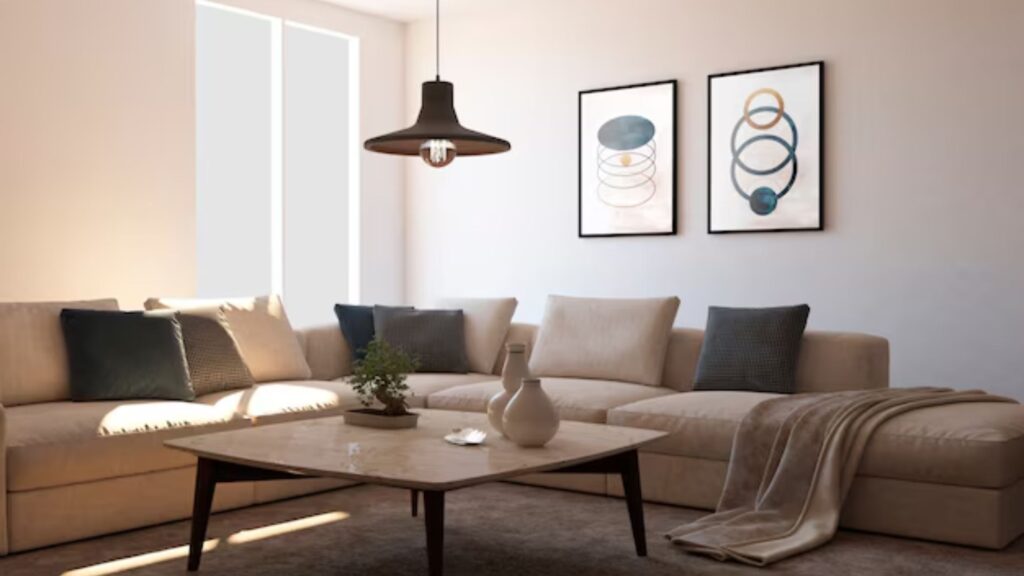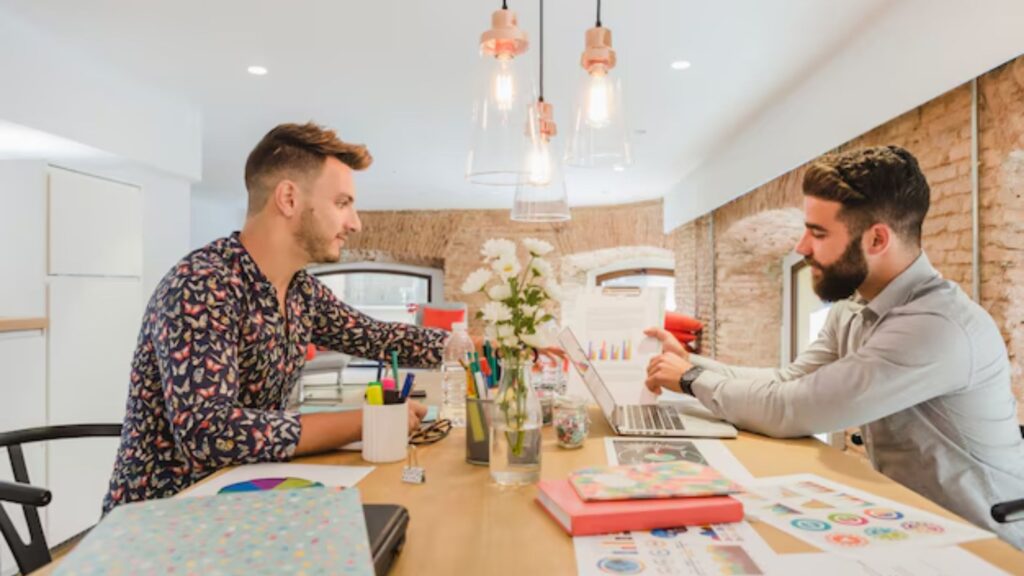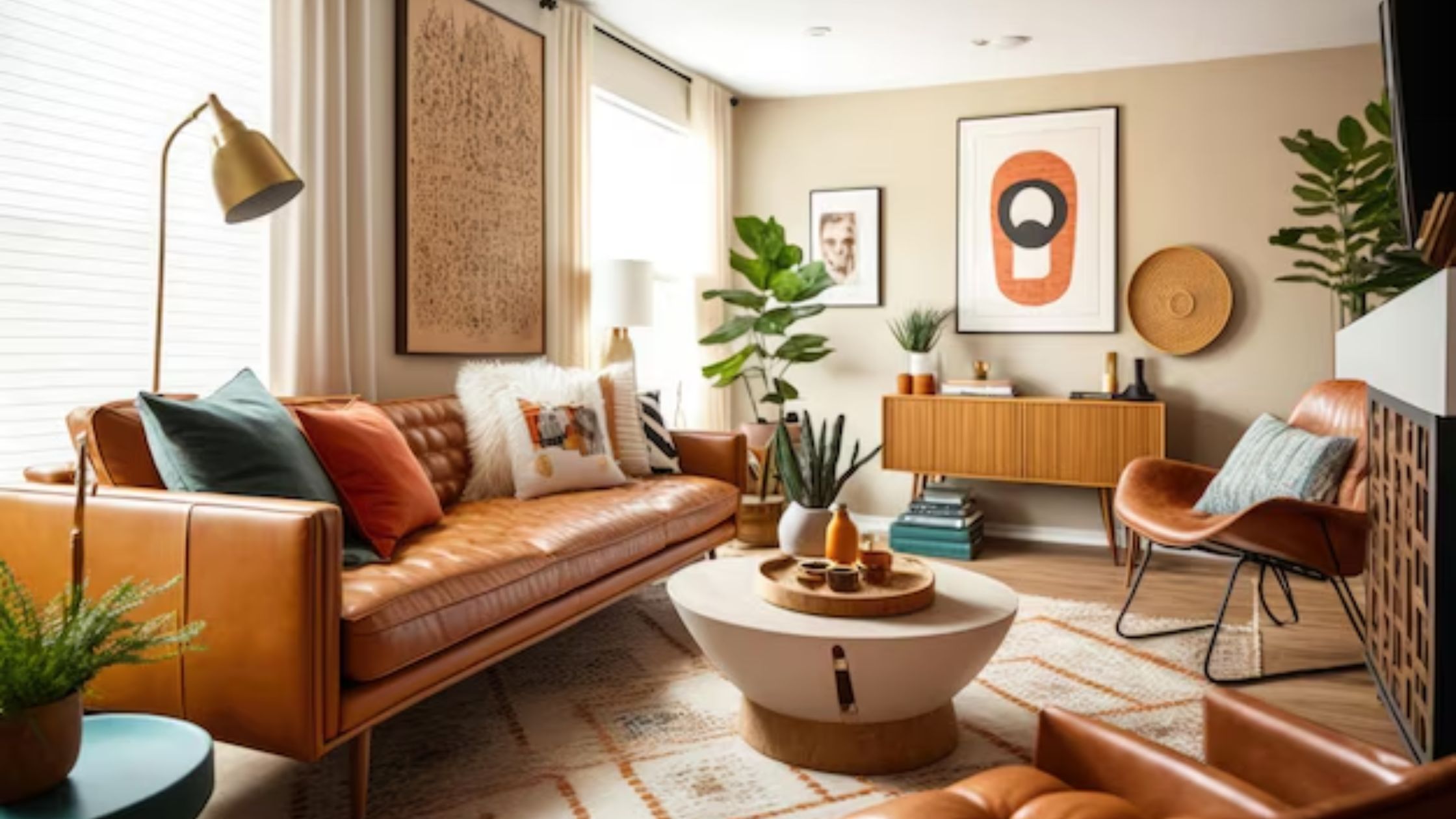Starting an interior design business with minimal investment is entirely possible if you take a strategic approach. First, define your niche and target market so you can focus on your services and stand out from the competition. Create a clear business plan that includes your goals, services, and target audience. Use cost-efficient digital marketing strategies such as creating a professional website and being active on social media platforms so you can showcase your portfolio and attract potential clients. Networking with local businesses and professionals in related fields can also lead to valuable referrals and partnerships that can establish your market presence.

In the beginning, consider offering small projects so you can build a portfolio and gain client trust without incurring large expenses. Use your existing abilities and resources, such as working from home or using free design software, to minimize overhead costs.
Table of Contents
Providing excellent service and personalized design solutions will strengthen your reputation and lead to repeat business and referrals. Gradually, as you gain experience and grow your client base, you can expand your services and invest in additional resources to grow your Interior Design Business further.
1. Identifying Niche and Target Market for Interior Design Business
Market research is a crucial step in starting your interior design business, as it helps you understand which particular market segments you want to serve. To identify your niche, analyze different areas of interior design such as residential, commercial, luxury, or eco-friendly design. Determine which of these areas match your strengths, interests, and market demand.
Research existing competitors to see if there is a gap or opportunity for differentiation. For example, if you notice that there is a growing trend in sustainable design but there are few local providers, this could be a potential niche.

Once you have determined your niche, focus on identifying the target market. This includes understanding the demographics, preferences, and needs of potential customers within your chosen niche. Collect data on factors such as age, income level, lifestyle, and design preferences.
This information will help you tailor your services and marketing strategies in a way that you can effectively reach and attract your ideal customers. For example, if your niche is luxury residential design, your target market may be high-income homeowners looking for exclusive and sophisticated design solutions. Surveys, analysis of market trends, and interactions with potential customers through social media can provide valuable insights in this regard.
2. Business Plan: Detailed Outline of Goals and Services
Creating a detailed business plan is a key step in establishing a successful interior design business. This plan serves as a roadmap guiding your Interior Design Business from the early stages to long-term success. First, clearly define your business goals, including short-term and long-term goals. Short-term goals may include getting your first few clients, building a portfolio, and establishing a brand presence. Long-term goals may include expanding services, opening a physical office, or achieving a specific revenue goal.

Next, outline the services you will offer. This should include a comprehensive description of each service, such as residential interior design, commercial design, space planning, color consulting, and custom furniture design. Explain how your services are different from competitors, whether it’s a unique design approach, sustainable practices, or excellent customer service.
Additionally, include details of your pricing strategy, target market, and marketing plan. A well-thought-out business plan not only helps secure funding from investors or lenders, but also provides a clear framework for your Interior Design Business operations, ensuring you stay focused and on track to achieve your objectives.
3. Branding: Developing a professional brand, including a logo and business cards
Branding is an important aspect of establishing your interior design business, as it creates a unique identity and sets you apart from competitors. The first step to developing a professional brand is creating a memorable and impactful logo.
Your logo should reflect the essence of your business and resonate with your target audience. It should be visually appealing, easily recognizable, and versatile for use across different platforms, such as your website, social media profiles, and promotional materials. Working with a skilled graphic designer can ensure that your logo is unique and professional, effectively communicating your brand’s values and aesthetics.

In addition to the logo, well-designed business cards are essential to make a lasting impression on potential clients and business partners. Business cards should include your logo, business name, your name, contact information, and a brief description of your services. These should be designed to match your overall brand identity, using the same colors, fonts, and images.
Using high-quality printing and paper can also enhance your brand’s perception of professionalism. In addition to logos and business cards, consider other branding elements such as a consistent color scheme, typography, and tone of voice for all communications. Consistent and professional branding not only builds credibility, but also fosters trust and recognition among your target audience, helping your business grow and succeed.
4. Portfolio: An effective showcase of your design work
Creating an impressive portfolio is essential for any interior design business, as it serves as a visual resume of your skills, creativity, and expertise. Your portfolio should showcase a diverse range of your design work, including completed projects, conceptual designs, and other relevant work that shows your capabilities. First, select your best projects that reflect your unique style and strengths.
Include high-quality photographs, floor plans, sketches, and before-and-after images so potential clients get a comprehensive view of your work. Accompany each project with a brief description, including the design challenge, your approach, and the solutions you implemented.

Organize your portfolio so that it’s easy to navigate, whether it’s in digital form on your website or in physical format. A digital portfolio can be more versatile, allowing you to reach a wider audience through your website and social media channels. Make sure your portfolio is visually appealing, with a clean and professional layout that aligns with your brand identity.
Update your portfolio regularly with new projects so it stays current and relevant. A well-crafted portfolio not only attracts potential clients, but establishes your credibility and demonstrates your commitment to quality and design excellence.
5. Website and Social Media: Set up a website and create social media profiles
Establishing an online presence through a professional website and active social media profiles is crucial to the success of your interior design business. Your website serves as a digital storefront, showcasing your portfolio, services, and contact information to potential clients. It should have a clean, visually appealing design that reflects your brand identity and is easy to navigate.
Include key sections such as an About page, a detailed portfolio, a list of services, client testimonials, and a blog to share design tips and updates. Make your website mobile-friendly and optimized for search engines (SEO) to attract more visitors and increase your online visibility.

In addition to a website, creating social media profiles on platforms such as Instagram, Facebook, Pinterest, and LinkedIn can greatly expand your reach and engagement with potential clients. Each platform offers unique opportunities to showcase your work, share industry insights, and connect with a wider audience. Regularly post high-quality images of your projects, behind-the-scenes glimpses of the design process, and content that shows your expertise and personality.
Use hashtags strategically to increase the visibility of your content and interact with followers by responding to comments and messages promptly. By maintaining a consistent and professional presence on social media, you can build a loyal following, increase traffic to your website, and ultimately grow your business.
6. You can start an interior design business in India with an estimated investment of ₹30,000 to ₹50,000
An investment of ₹30,000 to ₹50,000 can be a practical and viable option to start an interior design business in India. This investment can cover your basic start-up needs, such as legal registration, branding, and marketing materials. First, you can invest in getting the registration and necessary licenses to complete the legal formalities of the business. Apart from this, developing a professional brand will require designing logos and business cards, which will help establish your business identity.

A significant portion of this investment can also be spent on your website and social media profile setup. Creating a simple but professional website, which includes your portfolio and contact information, and creating profiles on social media platforms will give your business online visibility.
In addition, you can work on some initial design projects for your portfolio, which will give potential clients a clear view of your skills and style. Thus, with a well-thought-out investment plan, you can build a strong foundation at a low cost and start your interior design business successfully.
7. Profit Potential in Interior Design Business
Profit potential in an interior design business depends on many factors, such as your niche, client base, pricing strategy, and operational efficiency. In general, interior designers can expect a 10% to 30% profit margin on their projects, depending on the extent and complexity of the work. For example, residential design projects may have different profit potential than commercial projects, with commercial projects often offering higher budgets and higher fees.

An important factor in determining profitability is your pricing structure. Interior designers typically charge either a fixed fee, an hourly rate, or a percentage of the total project cost. By setting competitive but profitable rates and managing project costs effectively, you can maximize your profit margins. Additionally, building strong relationships with suppliers and subcontractors can help you get better rates and reduce costs, further increasing your profitability.
Operational efficiency also plays a key role in profitability. By streamlining your processes, reducing overhead costs, and effectively managing project timelines, you can handle more projects and increase your overall earnings. As your business grows and you establish a solid reputation, you can demand higher fees and attract more lucrative projects, significantly increasing your profit margins. Ultimately, with effective management and strategic planning, an interior design business can offer substantial profit potential and financial rewards.
8. Networking: Connecting with local businesses and potential clients
Networking plays a key role in building a successful interior design business, as it helps establish valuable relationships and create opportunities for growth. Connecting with local businesses can be especially beneficial, as these relationships often lead to referrals and collaborative projects. Attend local business events, trade shows, and industry meetups to connect with professionals in related fields, such as real estate agents, architects, and contractors. By establishing these connections, you can gain access to a network of potential clients and collaborators who may refer clients to you or partner with you on projects.

Networking with potential clients is equally important. Connect with your target market through a variety of channels, such as community events, social media platforms, and local advertising. Host or attend workshops, webinars, and design seminars so you can showcase your expertise and connect with people who are interested in interior design services. Providing valuable content like design tips and trends can establish you as an authority in your field and attract potential clients.
Personal contact and follow-up with prospects also helps build trust and shows your commitment to understanding their needs. By continually expanding your network and nurturing these relationships, you can create a steady stream of referrals and new business opportunities, which will ultimately contribute to the success and growth of your interior design business.
9. Feedback and Improvement: Collecting Customer Feedback and Refining Your Services
Collecting customer feedback is a crucial step in ensuring the success and growth of your interior design business. Feedback provides valuable information about your customers’ experiences, allowing you to understand their needs, preferences, and areas where your services may need improvement. To effectively collect feedback, apply a variety of methods such as surveys, direct interviews, and feedback forms.

Prompt customers to share their thoughts on different aspects of your service, such as design quality, communication, project management, and overall satisfaction. This information helps identify strengths and weaknesses in your approach, allowing you to make informed decisions about necessary adjustments.
After collecting feedback, use it to refine and improve your services. Analyze the feedback to identify common themes or recurring problems and determine priority areas for improvement. For example, if many clients mention that communication should be more timely, you might consider implementing better project management tools or protocols to address this concern.
Constantly refining your services based on client feedback not only improves client satisfaction but also helps build a positive reputation and foster customer loyalty. By demonstrating a commitment to excellence and responsiveness to client needs, you can differentiate your business from competitors and ensure long-term success in the interior design industry.
Conclusion
In conclusion, starting a successful interior design business with minimal investment is entirely possible if you focus on strategic planning, the right marketing, and excellent customer service. By defining your niche and connecting with the target audience, you can make your mark in cost-efficient ways. By starting with small projects and gradually growing your business, you can strengthen your expertise and client base. With the right approach and dedication, you can successfully establish and grow your interior design business.
If u want to Watch the Video You can visit to our You tube Businovations Channel and watch the video……
Click the link to read the Recent Posts….
Graphic Design Business Without a Big Investment: Tips and Strategies (164)


3 thoughts on “Starting Interior Design Business with Low investment (165)”